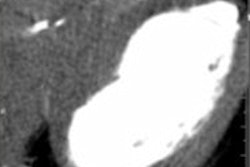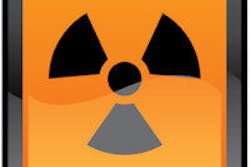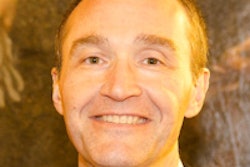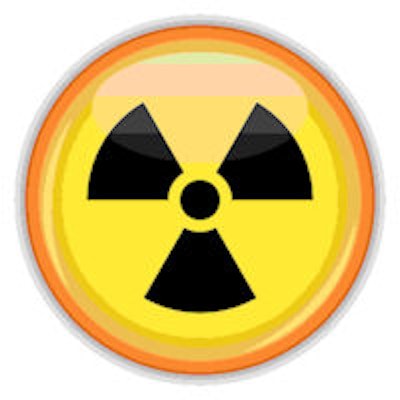
European hospitals perform nuclear cardiology at lower doses than the rest of the world, and they use more of the best practices that have been identified, according to the results of a global survey published in the European Journal of Nuclear Medicine and Molecular Imaging.
A survey led by the International Atomic Energy Commission (IAEA) invited laboratories around the world to document all SPECT and PET studies performed over a single week in 2013, aiming to compare nuclear cardiology radiation dose. The investigators collected data on more than 2,381 patients throughout Europe and more than 5,000 patients in the rest of the world, most of whom underwent SPECT myocardial perfusion imaging followed by a few (about 2%) who underwent cardiac PET scans.
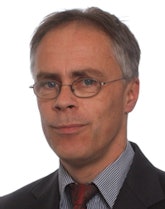 Dr. Oliver Lindner from University Hospital of the Ruhr University, in Bad Oeynhausen, Germany.
Dr. Oliver Lindner from University Hospital of the Ruhr University, in Bad Oeynhausen, Germany.European exams were performed at significantly lower radiation doses with higher image quality than comparable exams elsewhere, according to Dr. Oliver Lindner from University Hospital of the Ruhr University in Bad Oeynhausen, Germany, and colleagues from other centers around the world.
"The mean effective dose in a patient undergoing cardiac SPECT or PET in Europe is lower, and the quality score higher, than in the rest of the world," Lindner et al wrote.
The average effective dose for SPECT was 8.0 mSv in Europe versus 11.4 mSv in the rest of the world, while the average effective dose of PET, which constituted only a small number of exams, was 2.6 mSv versus 3.8 mSv in the rest of the world, the authors reported in their article posted on 19 December.
A major factor favoring Europe was its significantly higher use of stress-only protocols compared with the rest of the world -- at close to 19% more than six times the rate of the U.S.
The results did show significant variations among European regions, but the authors believe that Euratom directives first issued in 2007 and again in 2013 may have spurred the use of best practices, leading to lower radiation doses in Europe.
Nuclear cardiology is used around the world to measure myocardial perfusion and viability, and gauge left ventricular function noninvasively using SPECT or PET. Typically, coronary artery disease is diagnosed by inducing pharmacological stress with adenosine, sestamibi, or other less common compounds. While useful in diagnosis, the scans expose patients to the risks of ionizing radiation. Several best practices have been identified to obtain high-quality images while minimizing dose.
But it has not been possible to see how practitioners are doing with dose optimization on a global scale. Information on current nuclear cardiology practice and radiation doses is scarce and generally confined to single countries, Lindner and colleagues wrote.
The paucity of available data is what spurred the IAEA to conduct a worldwide study of 7,911 patients worldwide. during a one-week period in 2013, the authors wrote.
The primary outcome measure of the one-week study was radiation dose, in a study undertaken to "get for the first time an overview about nuclear cardiology practice with the main focus on radiation dose in Europe," as well as "to evaluate practical aspects between Europe and the rest of the world," Lindner wrote in an email to AuntMinnieEurope.com. Such a study would also be useful for identifying the most effective practices for radiation dose reduction, he added.
An IAEA panel identified the eight best practices for optimizing nuclear cardiology results and dose, which included:
- Avoiding thallium stress testing in patients 70 years or younger, as thallium has a long half-life (three days) and exposes patients to more radiation than technetium-99m (Tc-99m)
- Avoiding the use of both thallium and Tc-99m protocols in nonelderly patients
- Being judicious in the use of Tc-99m
- Avoiding too much thallium
- Performing stress-only imaging, when possible, rather than requiring every patient to undergo rest and stress tests
- Using gamma camera-based dose-reduction strategies, including advanced hardware and software, or prone and supine imaging to reduce false positives
- Applying weight-based dosing for Tc-99m to minimize isotope use
- Avoiding imaging practices that produce residual counts from the first injection that interfere with the second scan
In addition to estimating the effective dose, the investigators looked at the association between laboratory adherence to these best practices and patient effective dose using hierarchical linear regression models.
Finally, the participating European countries were assigned to regions, and the researchers compared North, South, East, and West to Europe as a whole and the rest of the world.
Europe does better
The study included data from 102 European laboratories in 27 countries. A cardiac SPECT study was performed in 97.9% of all patients, leaving just 2.1% to cardiac PET. The North region of Europe had the lowest SPECT dose, but adherence to best practices did not vary significantly among the European regions.
| Europe | Rest of World | Europe North | Europe South | Europe East | Europe West | |
| SPECT -- overall effective dose (mSv) | 8.0 ± 3.4 | 11.4 ± 4.3 | 6.9 ± 3.6 | 8.3 ± 2.9 | 8.2 ± 4.1 | 8.7 ± 3.7 |
| % patients with effective dose ≤ 9 mSv | 58.8% | 24.2% | 80.6% | 53.6% | 59% | 46.2% |
| % undergoing stress-only SPECT | 19.7% | 10.6% | n/a | n/a | n/a | n/a |
| Mean best practice quality score (out of 8 criteria) | 6.2 ± 1.2 | 5.0 ± 1.1 | 6.4 ± 1.4 | 6.2 ± 1.1 | 6.1 ± 1.0 | 6.0 ± 1.4 |
| PET overall mean effective dose (mSv) | 2.6 ± 1.5 | 3.8 ± 2.5 | 2.4 ± 0.2 | 2.7 ± 1.7 | 7.3 ± 2.1 | 1.5 ± 0.7 |
The authors concluded that mean effective doses in Europe are lower and the average quality score is higher compared with the rest of the world, and that adherence to quality criteria correlated with dose.
"A possible reason for the differences between Europe and the rest of the world could be the safety culture fostered by actions under the Euratom directives and the implementation of diagnostic reference levels," the authors wrote. Two important quality practices, stress-only imaging and weight-adjusted activity, "might be targeted for optimization of European nuclear cardiology practice," they added.
"There is still some potential for improvement," Lindner told AuntMinnieEurope.com. "If [cadmium zinc telluride] systems get cheaper and more widespread, doses will reduce."
Centers should adhere to best practices, Lindner added. The experience in Germany has shown that changes to practice come slowly, so the data gathered during one week in 2014 has not likely changed much in the years since.
"On the other hand, there are clear recommendations concerning best practices. I think some changes may have already happened," Lindner wrote. "Another survey to monitor the development is needed."





